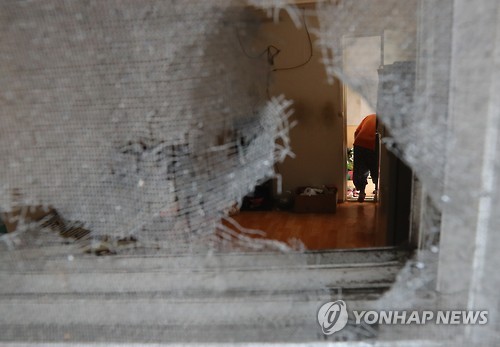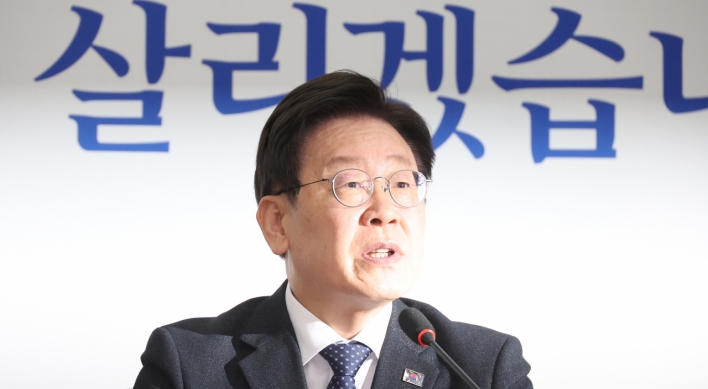Korea's income disparity among seniors 2nd highest in OECD
By Ock Hyun-juPublished : Sept. 11, 2016 - 17:05
South Korea had the second-highest income disparity among senior citizens out of the member countries of the Organization for Economic Cooperation and Development, as their jobs are mostly low-paying and unstable, a government report showed Sunday.
According to a report on the employment structure and income disparity of seniors released by the Korea Labor Institute, the Gini coefficient -- a measure of inequality -- for people aged 65 or over in Korea was 0.422, the second highest after Chile at 0.428.
On a scale between 0 and 1, the closer the Gini ratio is to 1 the greater the income inequality. When the Gini index is above 0.4, the extent of income disparity is seen as serious.
The inequality among senior citizens is in stark contrast to the relatively low level of income disparity among the working population.
According to a report on the employment structure and income disparity of seniors released by the Korea Labor Institute, the Gini coefficient -- a measure of inequality -- for people aged 65 or over in Korea was 0.422, the second highest after Chile at 0.428.
On a scale between 0 and 1, the closer the Gini ratio is to 1 the greater the income inequality. When the Gini index is above 0.4, the extent of income disparity is seen as serious.
The inequality among senior citizens is in stark contrast to the relatively low level of income disparity among the working population.

The Gini coefficient among Koreans aged 18 and 65 was 0.28, lower than major economies like the United States at 0.392, the United Kingdom at 0.353, Germany at 0.299 and France at 0.294.
The income inequality among the elderly is attributed to a growing number of retirees landing low-quality, low-paying jobs, according to the report.
“The increase in the employment rate for senior citizens will likely continue as baby boomers born between 1955 and 1963 have started to retire,” researcher Kim Bok-soon said in the report. “But the jobs are mostly irregular, part-time and unstable, providing poor working conditions.”
The employment rate for senior citizens aged 60 or over was 38.9 percent last year, with them accounting for 21.9 percent of the working-age population.
According to Statistics Korea, 11.6 percent of the entire working population took home less than the minimum wage (5,580 won per hour) last year, while 37.1 percent of the elderly earned less than the minimum wage. Nearly 57 percent of the senior citizens received low-pay, which is two-thirds of the nation’s median income.
Women in the age group were also more exposed to income disparity, with 71.6 percent of them receiving low pay and 46.6 percent of them being paid less than the minimum wage, the data showed.
The poverty rate -- the proportion of people with net income below a defined threshold -- for senior citizens with more than two family members in a household was 47.6 percent, while the figure for elderly living on their own was 67.1 percent
Most of the working seniors found temporary, irregular employment in the services, health care and social welfare industries, the report said.
“Given the senior generation entering the labor force right now has not prepared themselves for after-retirement life and most of them are willing to remain in the labor market even by holding low-quality job, the government needs to release policies to curb income inequality and create quality jobs for seniors to make use of their experience at work,” said Kim.
By Ock Hyun-ju (laeticia.ock@heraldcorp.com)
The income inequality among the elderly is attributed to a growing number of retirees landing low-quality, low-paying jobs, according to the report.
“The increase in the employment rate for senior citizens will likely continue as baby boomers born between 1955 and 1963 have started to retire,” researcher Kim Bok-soon said in the report. “But the jobs are mostly irregular, part-time and unstable, providing poor working conditions.”
The employment rate for senior citizens aged 60 or over was 38.9 percent last year, with them accounting for 21.9 percent of the working-age population.
According to Statistics Korea, 11.6 percent of the entire working population took home less than the minimum wage (5,580 won per hour) last year, while 37.1 percent of the elderly earned less than the minimum wage. Nearly 57 percent of the senior citizens received low-pay, which is two-thirds of the nation’s median income.
Women in the age group were also more exposed to income disparity, with 71.6 percent of them receiving low pay and 46.6 percent of them being paid less than the minimum wage, the data showed.
The poverty rate -- the proportion of people with net income below a defined threshold -- for senior citizens with more than two family members in a household was 47.6 percent, while the figure for elderly living on their own was 67.1 percent
Most of the working seniors found temporary, irregular employment in the services, health care and social welfare industries, the report said.
“Given the senior generation entering the labor force right now has not prepared themselves for after-retirement life and most of them are willing to remain in the labor market even by holding low-quality job, the government needs to release policies to curb income inequality and create quality jobs for seniors to make use of their experience at work,” said Kim.
By Ock Hyun-ju (laeticia.ock@heraldcorp.com)
-
Articles by Ock Hyun-ju




![[Herald Interview] 'Amid aging population, Korea to invite more young professionals from overseas'](http://res.heraldm.com/phpwas/restmb_idxmake.php?idx=644&simg=/content/image/2024/04/24/20240424050844_0.jpg&u=20240424200058)






![[Hello India] Hyundai Motor vows to boost 'clean mobility' in India](http://res.heraldm.com/phpwas/restmb_idxmake.php?idx=644&simg=/content/image/2024/04/25/20240425050672_0.jpg&u=)







![[Today’s K-pop] NewJeans' single teasers release amid intrigue](http://res.heraldm.com/phpwas/restmb_idxmake.php?idx=642&simg=/content/image/2024/04/26/20240426050575_0.jpg&u=)